Germophobes beware! What you learn here will definitely rob you off at least one night of sleep.
On the most serious note, it is a fact that there are a lot of nasty germs lurking from all over the place.
However, being near all of those germs does not automatically mean that you will get contaminated and get some horrible disease.
Moreover, chances are that you will most likely be fine. Especially if you have good personal hygiene habits and a good immune system.
But, if you like to get a bit scared, here are some of the most horrible germs which are not somewhere across the globe – they are just a couple of meters from you or even closer. The good news is, they need to be in much bigger amounts for them to hurt you, so you are safe.
Most of them occur in the places of high frequency, just like the offices are. So, a managed workplace washroom may be a great idea.
1. Staphylococcus
You do not have to go very far searching for Staphylococcus bacteria. There are probably some in your own nose, right now. It is also commonly found on the skin of healthy people.
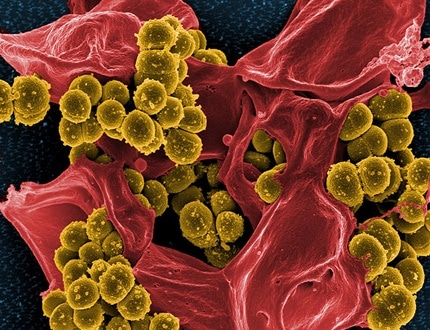
Photo courtesy: Wikimedia Image by NIAI
There are over 30 types of Staphylococcus and the most common one is Staphylococcus aureus. In most cases, it causes mild infections and symptoms that are more annoying than dangerous. They usually cause irritating skin infections.
However, these tiny bacteria cause a lot of troubles if it reaches your bloodstream. Your lung and your heart are in grave danger if this happens. S. aureus causes necrotizing pneumonia that is a rare but very deadly disease.
Also, it can cause septicemia that is blood poisoning, which can have a deadly outcome if not treated properly. It usually strikes those with weakened immune systems.
Different studies showed that S. aureus caused diseases are more present in New Zealand than in other developed countries. One more reason to be extra careful about your hygiene.
2. Streptococcus
You already have some sort of Streptococcus bacteria in your mouth. There are many types which are mostly harmless when you are healthy. They usually cause tooth decay and a sore throat.
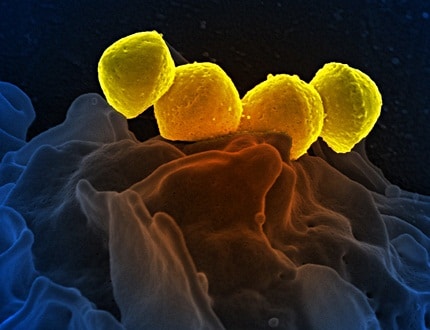
Photo Courtesy from: Flickr Image by NIAID
But if something goes terribly wrong, they can cause necrotizing fasciitis or streptococcal toxic shock syndrome. These diseases can be deadly.
Group B Streptococcus (GBS) live in your intestines. Normally, they are harmless and even necessary. However, if you have a seriously dysfunctional immune system, GBS can wreak havoc. It can cause meningitis and septicaemia in newborn babies.
3. Legionella
In nature, you can find Legionella in lakes and streams. However, this bacteria is much closer than you think. Legionella likes to settle in your shower head and water taps.
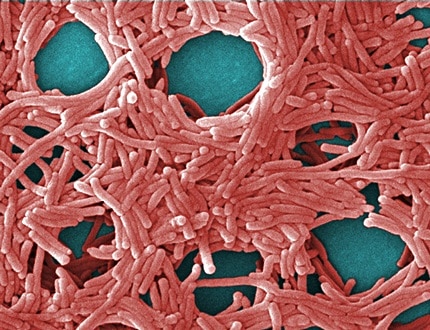
Photo Courtesy from: Wikimedia Commons Image by Janice Haney Carr
A certain type of this bacteria, Legionella pneumophilia, causes Legionnaires’ disease. This is a severe form of pneumonia that can be deadly and a certain percent of survivors has seriously affected life quality.
Therefore, it is of essential importance that your workplace washroom is constantly clean, using excellent cleaning products.
4. Pseudomonas aeruginosa
If you ask a doctor where Pseudomonas is found, the answer will be: in the soil, water and plants. In other words, everywhere around you. Although, it seems to like poorly chlorinated swimming pools. Pseudomonas strings like moist surfaces and it does not normally cause troubles.
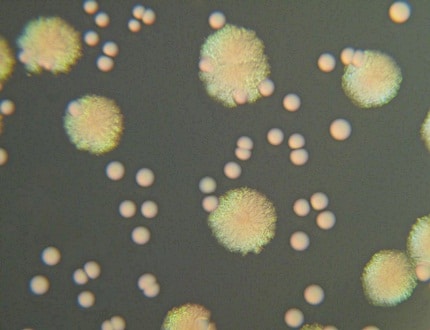
Photo Courtesy from: Wikimedia Commons Image by HansN.
However, this opportunistic bacteria is extremely dangerous for those that have a compromised immune system:
- the elderly
- HIV positive persons
- surgery patients
- burn victims
- those that have catheters and similar devices
P. aeruginosa can cause blood infections and pneumonia. Treatment is very tricky because P. aeruginosa is resistant to many antibiotics and it also develops resistance very quickly. Therefore, the diseases it causes can easily result in death.
With this in mind, prevention is the best cure for these types of diseases. Sanitary conditions in hospitals and personal hygiene habits must be enabled in order to protect yourself and everybody around you against this bacteria.
5. Escherichia coli
This is one more bacteria that can live inside you throughout your entire life and never cause you harm. E. coli is found in animals and humans and it is part of the well-balanced gastrointestinal flora.
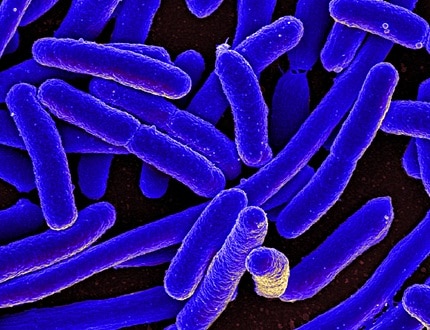
Photo Courtesy from: Flickr Image by NIAID
The fact that you have this bacteria in your intestines, can give you a clue that you can probably find it in toilets. Getting in touch with contaminated water or food, or ingesting it due to poor personal hygiene habits causes the infections.
Some of the E. coli types cause bloody diarrhoea, vomiting and cramps. While healthy adults relatively easily recover from this, children and the elderly are in the greater risk of developing the hemolytic uremic syndrome. It is a severe life-threatening disease.
6. Cladosporium
All the germs above are bacteria. Cladosporium is a fungus. This is not an uncommon fungus, as it is the common household mould. It can be found in your carpets, wallpapers or even air if the environment is moist.
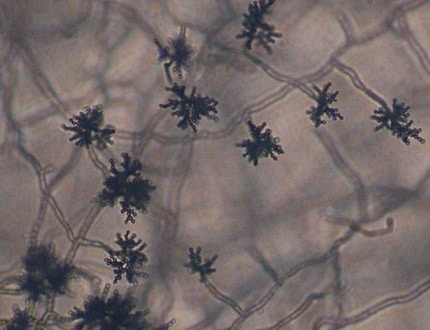
Photo Courtesy from: Wikimedia Commons Image by Keisotyo
It does not cause many troubles, normally. Cladosporium can cause eye irritation, skin infections and sinus infections.
However, this supposedly benign fungus was a part of an outbreak of fungal meningitis. This disease is extremely rare. Still, it is very deadly, as well.
7. Exserohilum
This common household mould fungus does not frequently cause any problems with people. If it does, it usually causes eye infections. While it cannot be transmitted from one person to another, some serious Exserohilum infections include attacks on the sinuses or even lining of the heart.
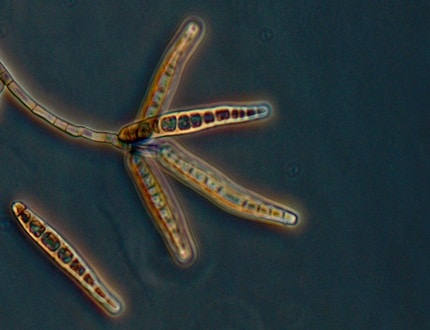
Photo Courtesy from: Wikimedia Commons Image by CDC
Still, together with Cladosporium and Aspergillus, this fungus was one of the causes for the fungal meningitis outbreak that killed some patients. Therefore, always make sure that your workplace is free of any mould that might cause your employees any of the health problems.
8. Salmonella
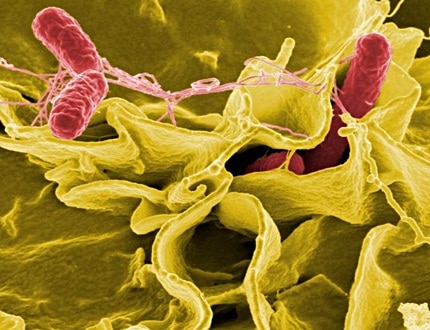
Photo Courtesy from: Flickr Image by NIAID
Everybody knows that they should be very careful not to eat questionable food because they might get food poisoning. In some of those cases, the bacteria that causes food poisoning is Salmonella. It causes diarrhoea, cramps, vomiting and high fever.
This lasts for around three days, but the balance in your intestines may take months to recover.
But, that is not all. If Salmonella reaches the bloodstream and infects it, patients will die if not treated with antibiotics promptly. However, these cases are very rare.
You may think that bacteria this dangerous is found only in some exotic places. The truth is, you just need to open up your fridge. It can be found in raw meat and eggs. Luckily for everybody, high temperatures kill it. So, you need to be sure that all your meals are properly cooked.
9. Aspergillus
It is quite easy to miss out on some hidden patches of mould around your home. But, some of it may be packing the Aspergillus fungus. Again, it is not usually dangerous.
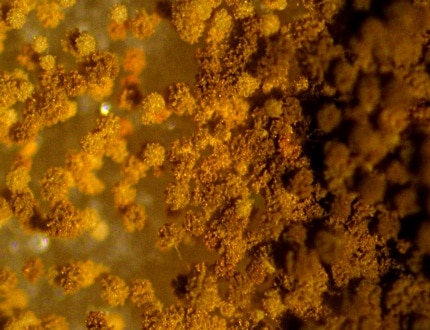
Photo Courtesy from: Wikimedia Commons Image by Ninjatacoshell
Still, large quantities of inhaled spores can cause:
- invasive or non-invasive pulmonary aspergillosis
- chronic pulmonary aspergilloma
- severe asthma
Aspergilloma is actually a ball of fungus that forms in the patient’s lungs. The invasive aspergillosis has a very high mortality rate with patients that have a weakened immune system. It ranges from 25-90%.
10. Clostridium tetani
This bacteria causes a very severe disease called tetanus or lockjaw. Its symptoms include severe muscle spasms that spread throughout the body. The danger lies in the fact that these spasms can compress the lungs and make it extremely difficult to breathe.
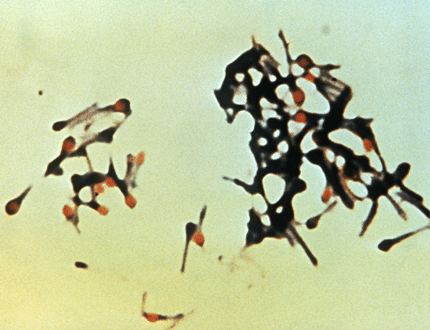
Photo Courtesy from: Wikimedia Commons Image by CDC
Clostridium tetani can be found in soil and manure. It translates – your garden. New Zealand organises immunisation against this bacteria and it is very successful in it.
With the immunisation present in most of the countries, the tetanus mortality rate has dropped significantly, but it still means that the C. tetani are deadly bacteria.
To be on the safe side, you need to make sure that your employees are not infected, at all. Many bacteria and other germs make troubles upon entering the bloodstream through cuts and grazes. Therefore, it is important that you always have a fully stocked first aid kit.
The other thing that comes to mind when thinking about these germs is how easily they can be avoided by good personal hygiene habits. Since your workplace welcomes a lot of people, you need to make sure that hygiene is flawless.
For example, do you know which germs are all around school washrooms? Find out in our School Washroom Guide and learn what it takes to prevent spreading them all around so that students and school staff can stay healthy and safe.
Getting high personal hygiene habits is easy with Alsco. We offer sanitary floor mats and uniforms, managed washroom services and many more ways to keep your workplace safe and healthy.
Simply contact Alsco and we will find the affordable solution for your workplace that works the best.
Photo Courtesy from Flickr Image by U.S. Department of Agriculture


